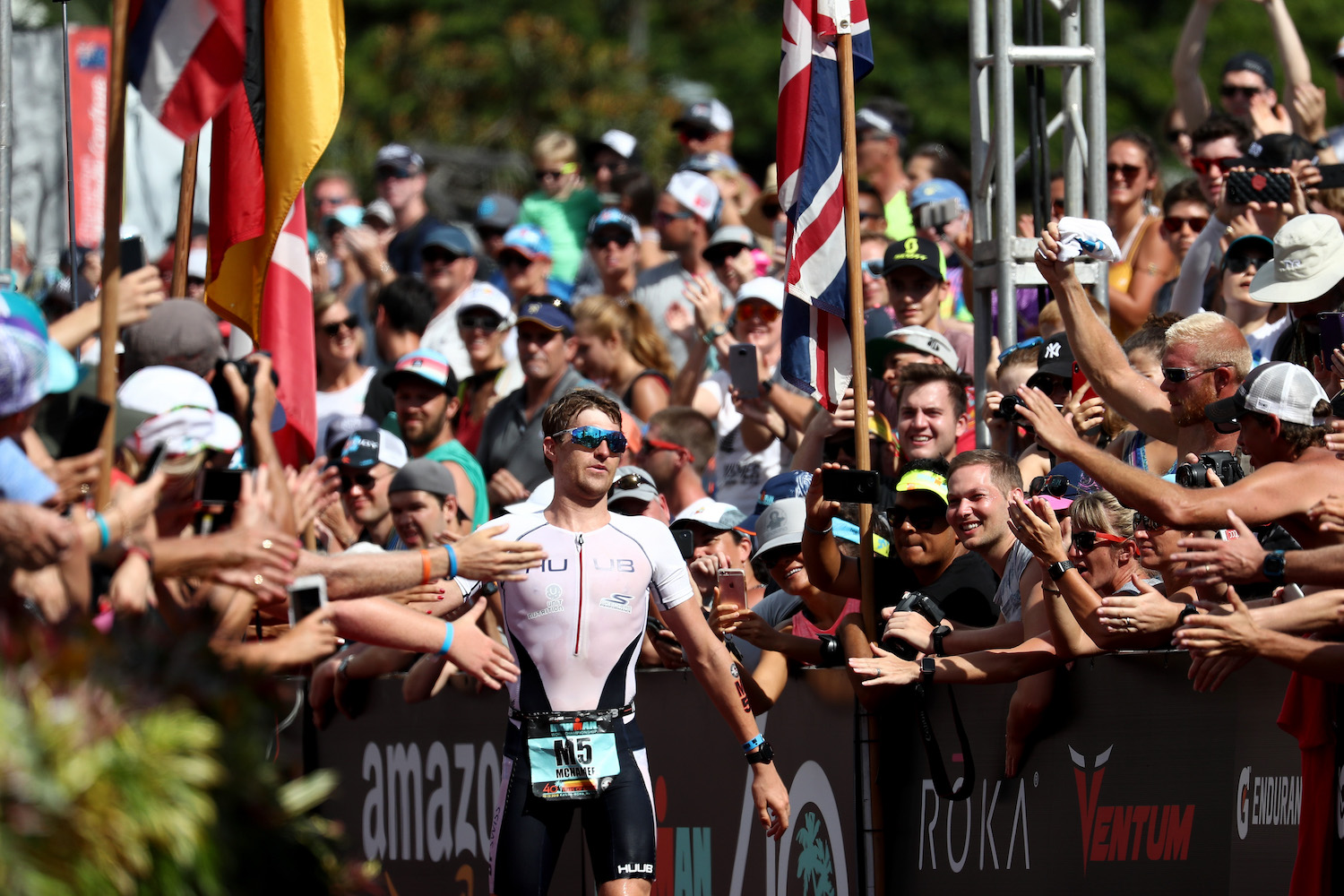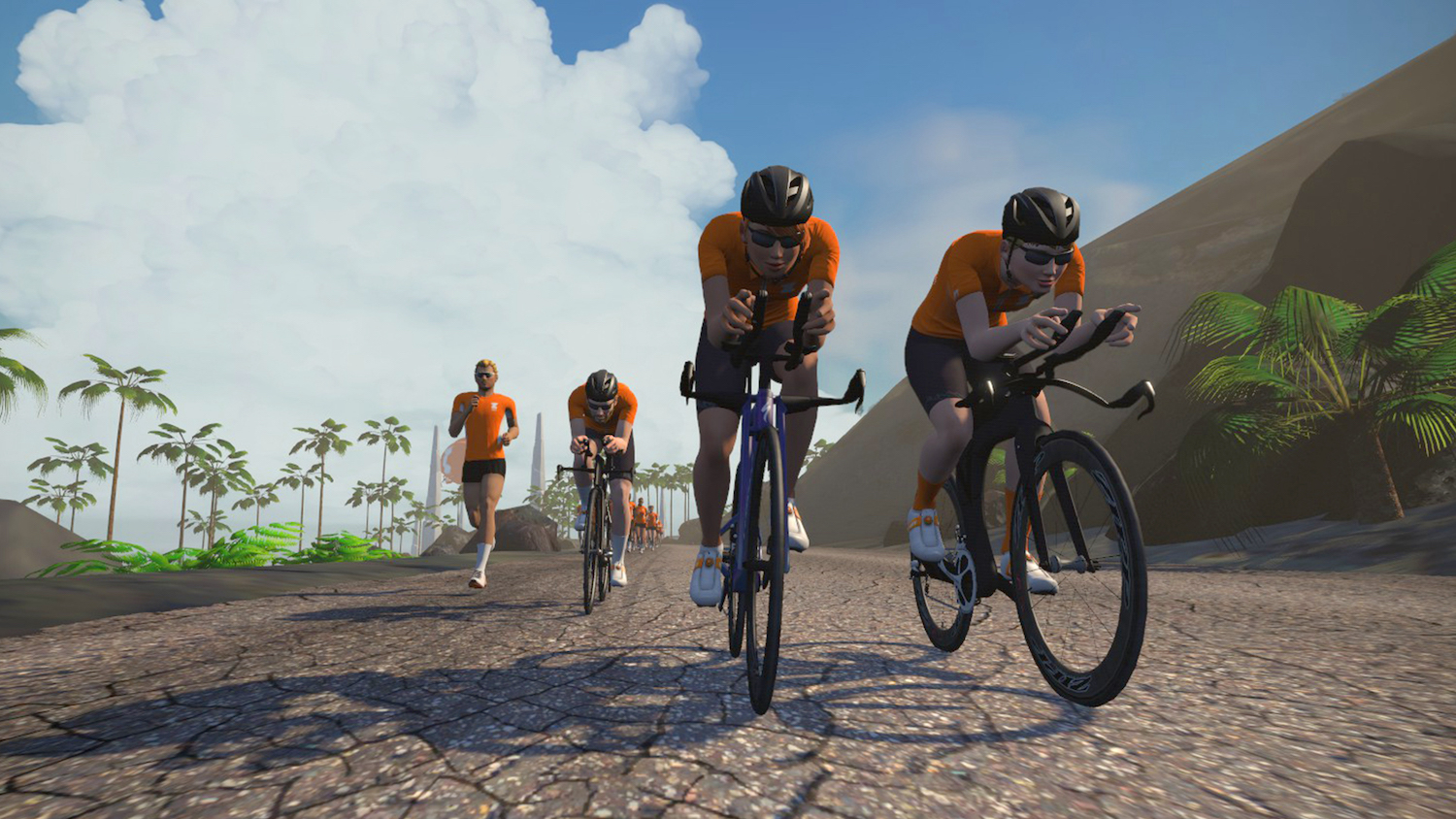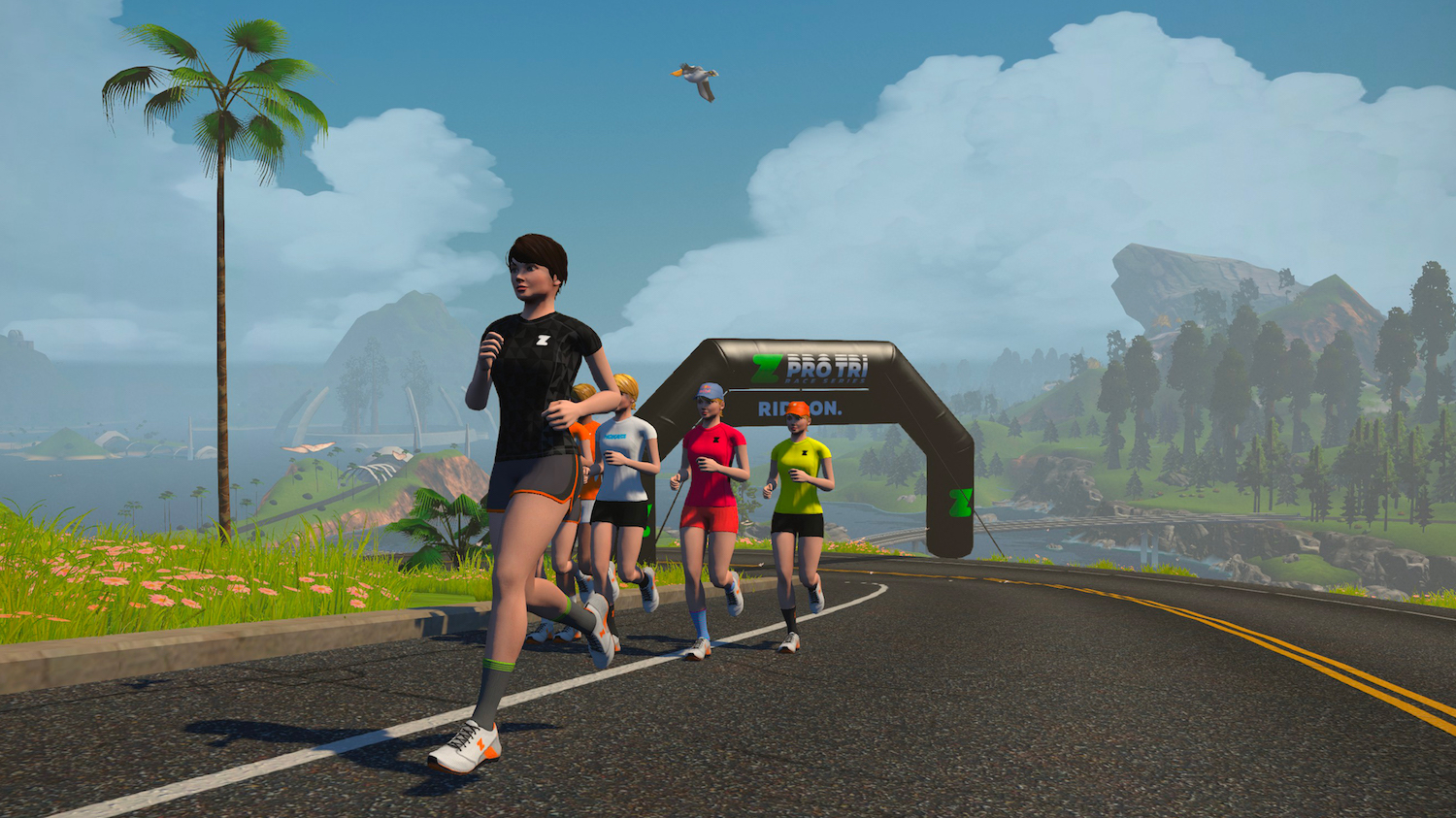David McNamee shares his key Zwift sessions for Kona
Britain’s most successful male triathlete in Kona gives us the indoor sessions he relies on to help him reach the Ironman World Championship podium

While one of the joys of triathlon is to get outside into the fresh air and explore the countryside, indoor training has really come into its own in the past few years.
There are numerous advantages to training indoors. Time spent on the turbo – particularly in the aero position – is safer than being on the roads, is often more time-efficient and, particularly in adverse weather conditions, is sometimes the only option.
More recently, thanks to training software such as Zwift, indoor workouts have also become much more sociable and enjoyable too.
They work for all levels of triathlete and in the build-up to the Ironman World Championship in Hawaii – the biggest race of the year in long course – many professionals and leading age-groupers use the Zwift platform to train and race to hone their conditioning and optimise performance.
That list of athletes has some big names in it, too, including three-time Ironman world champion Jan Frodeno, five-time Ironman world champion Daniela Ryf and two-time 70.3 world champ Gustav Iden.
And it’s not just limited to bike sessions, either. Zwift has evolved to include running as well as cycling, so you can liven up your treadmill sessions by taking your avatar on a tempo run through several virtual worlds.
But what sessions should you be doing and why? Who better to ask than Britain’s most successful triathlete on the Big Island, two-time Kona podium-getter, David McNamee.

The Scot is known for not just pacing his race in Hawaii to perfection, but the entire build-up, and it’s helped him to be in peak condition – particularly in 2017 and 2018 – to take on the furnace of the lava fields and the might of the world’s best.
“Zwift has brought a great element of fun to being on the trainer and I found that my cycling improved significantly from using it daily,” McNamee says.
“I’ve always introduced indoor sessions to my Kona build-up because it allows me to focus on riding in the aero position safely for long stretches of time.
“Also, the nature of the course in Hawaii means I’m pedalling for the entire 180km bike section, so the Zwift training is perfect to condition your body for this.”
Below, David provides us with six of his favourite go-to Zwift sessions – four bike and two run – which he’ll be using as he targets yet more success on the Big Island this October.
As ever, you can build these workouts directly in Zwift or import them from a third-party app such as Training Peaks and Today’s Plan in line with your training plan.
Head to the Zwift website to see what else this popular platform has to offer and to sign up now for your free seven-day trial.
David McNamee’s top bike sessions
1. Strength builder
Duration: 65mins
Overview: Will work on building leg strength when holding the aero position.
Aim of the session: To build muscular strength, which is important over the closing stages of the bike leg. Ideally, complete the intervals in the aero position to fully engage the muscles you use when racing.
Progression: Add one interval each week until you reach 6x10min.
Session breakdown
Warm-up: 15mins warm up with 3x10sec accelerations to get the legs firing
Main Set: 3x10mins at 60-65 cadence and half-Ironman power. 5min easy spin between intervals
Cooldown: 10mins
Progression: Add one interval each week until you reach 6x10min.
2. Race prep

Duration: 85mins
Overview: Dialling in your race pace, so you intuitively understand how it feels.
Aim of the session: To get used to holding race pace while being in the aero position. Important for any long-distance race, but particularly for Hawaii where the rolling Queen K highway gives few opportunities to sit up and stretch without losing time into the wind.
Progression: The aim is to progress until you can do 2hr at goal power, either 4x30min or 2x60min, keeping 10min recovery between intervals.
Session breakdown
Warm-up: 15mins as 5min easy, 5mins build to Ironman pace, 4mins at Ironman pace, 1min easy
Main set: 2x30mins at Ironman goal power in aero position. 10mins easy spin between intervals
Cooldown: 10mins
3. VO2 boost
Duration: 55mins
Overview: A hard session completed in less than 60mins.
Aim of the session: A relatively short session to help increase your VO2 max – the amount of oxygen you can process while exercising – and break any staleness of spending too much time working at Ironman pace.
Progression: Increase to 3x10mins.
Session breakdown
Warm-up: 15mins including 3x30sec build to sprint
Main set: 2x10mins as 40sec @ 120% FTP, 20sec @ 55% FTP (i.e. 40sec hard but in control, 20sec easy but still pedalling). 5mins recovery between sets
Cooldown: 15mins

How to test your FTP with Zwift
Not sure what functional threshold power (FTP) is? Put simply, it’s the power you can stay below and sustain for large period of time during your ride, whereas going above it will cause you to fatigue imminently.
You can conduct an FTP test on Zwift via the workouts screen. There’s an hour option and a 45-minute option, but both will require you to warm up and then generate as much power as possible when prompted.
There’s also a ramp test, which gradually increases power in one-minute steps until you can’t maintain the target power, if you’re keen to get your results (and your pain) in a hurry.
Once you know your FTP figure, you can use this to better shape your training and monitor it as an indicator of your fitness.
4. Over and under
Duration: 95mins
Overview: Getting used to riding slightly over and under race pace.
Aim of the session: The rolling climbs in Hawaii mean there will be times where you push slightly harder than your overall target power and moments where you will ease back on the fast downhills. This session gets you prepared, while also helping you settle back into your Ironman pace.
Progression: Build to a maximum of 5x20mins.
Session breakdown
Warm-up: 15mins gently increasing effort, but making sure the last 60sec are easy before main set
Main set: 3x20mins as 5mins @ 120% target Ironman pace or effort, 5mins @ 85% target Ironman pace or effort, 10mins @ Ironman pace. 5mins easy between sets
Cooldown: 10mins
David McNamee’s top run sessions

1. Race simulation
Duration: 60mins+
Overview: This is a race-specific workout that’s ideally completed as the second half of a brick session.
Aim of the session: The best form of race prep is to do a race-specific brick session, so this session is designed specifically to get you ready to race. Try and use race nutrition for this, especially if you’ve biked beforehand.
Progression: Build to a maximum of 4x5km. But be warned. That’s a big session where race nutrition really is key.
Session breakdown
Warm-up: 10mins build run. If you have biked beforehand then skip the warm-up
Main set: 2x5km at goal race pace, 2mins easy between intervals
Cooldown: 10mins
2. Half Ironman & Ironman combination
Duration: 75min+
Overview: A mixture of half-Ironman and Ironman work but a bigger focus on Ironman.
Aim of the session: To keep a bit of speed in your run training, but also get you used to settling into Ironman pace when your heart-rate is high and legs start fatiguing. There should be a discernible difference as you step up the pace to half-Ironman.
Progression: Build up to 21km as 7x 1km @ half-Ironman pace, 2km @ Ironman pace.
Session breakdown
Warm-up: 10-15mins with 3x15sec accelerations
Main set: 12km as 1km @ half-Ironman pace, 2km @ Ironman pace
Cooldown: 10mins
Want to know more? Head to the Zwift website to see what else this popular platform has to offer and to sign up now for your free seven-day trial.
And remember, if you only use Zwift on the treadmill, that’s entirely free!
Top image credit: Eric Alonso/Getty Images for Ironman




